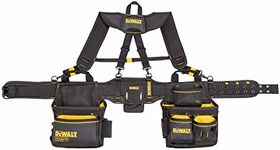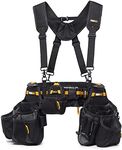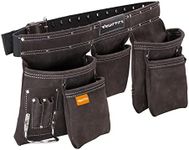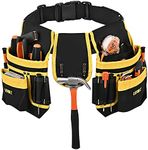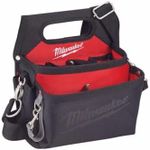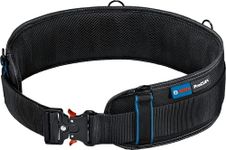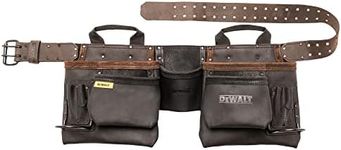Buying Guide for the Best Tool Belts
Choosing the right tool belt is essential for anyone who frequently works with tools, whether you're a professional tradesperson or a DIY enthusiast. A well-chosen tool belt can improve your efficiency, keep your tools organized, and reduce the strain on your body. When selecting a tool belt, consider the types of tools you use most often, the duration you'll be wearing the belt, and the environments in which you'll be working. It's important to find a balance between capacity, comfort, and durability to ensure that your tool belt meets your specific needs.MaterialThe material of a tool belt affects its durability, weight, and comfort. Common materials include leather, nylon, and canvas. Leather is very durable and can handle heavy tools, but it can be heavier and more expensive. Nylon is lightweight and often more affordable, but it may not last as long as leather. Canvas is a good middle ground, offering durability and comfort. Consider the types of tasks you'll be doing and the conditions you'll be working in. If you need a belt for heavy-duty work, leather might be the best choice. For lighter tasks or occasional use, nylon or canvas could be more suitable.
Pockets and CompartmentsThe number and arrangement of pockets and compartments determine how many tools you can carry and how easily you can access them. Tool belts can range from having a few large pockets to many small ones. If you use a variety of tools, a belt with multiple compartments can help keep everything organized. However, if you only need to carry a few essential tools, a simpler design might suffice. Think about the tools you use most frequently and ensure the belt has appropriate storage for them.
Belt Size and AdjustabilityThe size and adjustability of a tool belt are crucial for comfort and fit. A belt that is too tight or too loose can cause discomfort and hinder your movement. Many tool belts come with adjustable straps or buckles to fit a range of waist sizes. It's important to try on the belt, if possible, to ensure it fits well and feels comfortable when loaded with tools. Consider how much adjustability you need, especially if you plan to wear the belt over different types of clothing.
Weight DistributionWeight distribution refers to how the weight of the tools is spread across the belt. A well-designed tool belt will distribute weight evenly to prevent strain on your back and hips. Some belts come with padded straps or suspenders to help distribute weight more evenly. If you plan to carry heavy tools or wear the belt for extended periods, look for features that enhance weight distribution to maintain comfort and reduce fatigue.
Closure TypeThe closure type of a tool belt affects how securely it fits and how easy it is to put on and take off. Common closure types include buckles, Velcro, and snap fasteners. Buckles provide a secure fit and are adjustable, but they can be more time-consuming to fasten. Velcro is quick and easy to use but may wear out over time. Snap fasteners offer a balance between security and convenience. Consider how often you'll need to adjust or remove the belt and choose a closure type that suits your needs.

